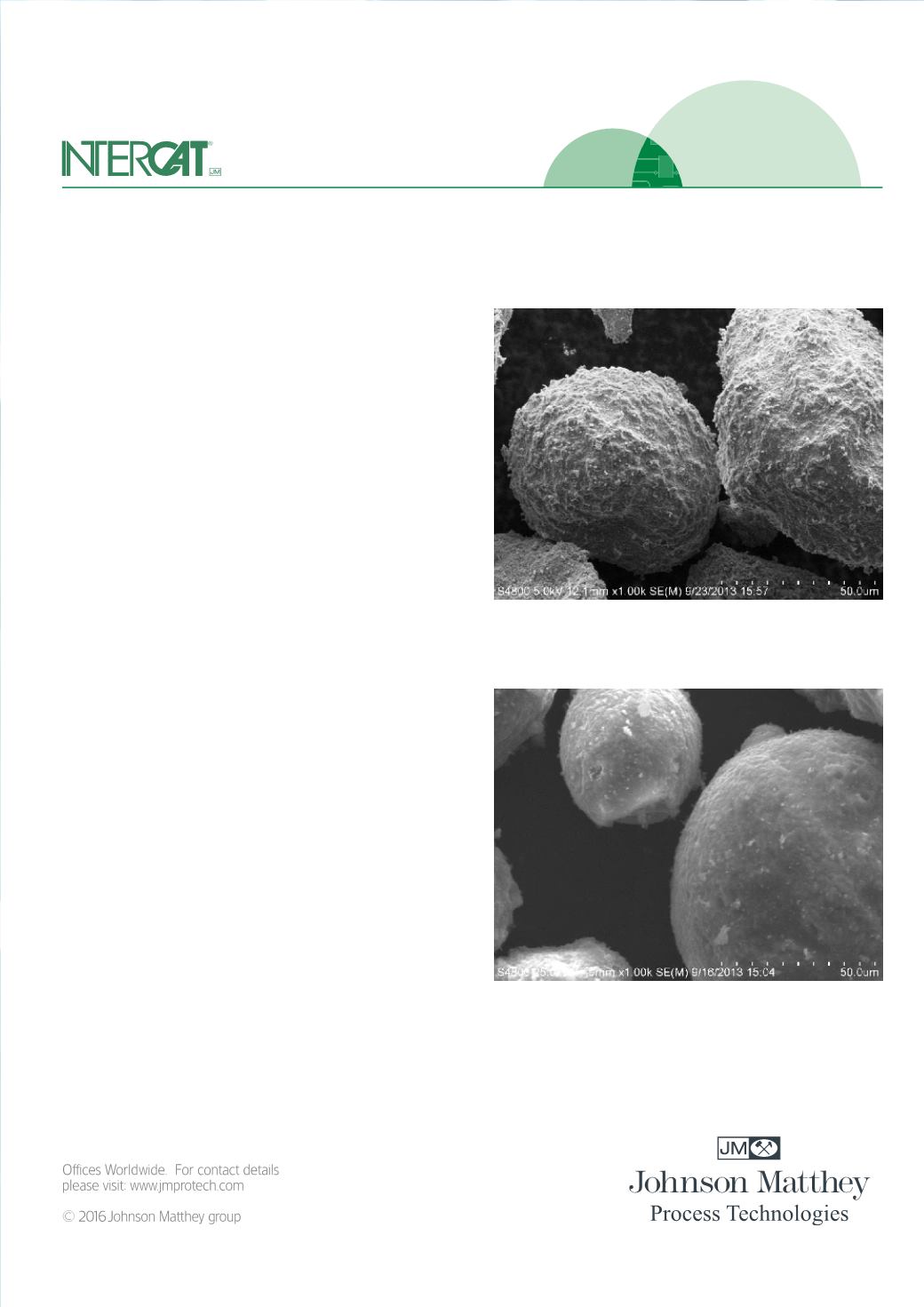
Many shale oil feeds contain high levels of metal
contaminants such as Nickel, Vanadium, Calcium, Iron,
Sodium and Potassium which can limit the refiner’s ability
to process these feeds and significantly impact unit
operation and the profitability of the Fluid Catalytic
Cracking Unit (FCC).
Iron poisoning, in particular, can have an adverse effect on
FCC performance, causing many challenges for refiners
through diminished conversion, increased slurry, coke, dry
gas selectivity and increased regenerator flue gas SOx
emissions.
When the iron content is high enough it reacts with the
silica from the base catalyst and essentially seals off the
catalyst interior by forming a shell-like layer at the catalyst
surface that inhibits hydrocarbon diffusion into and out of
the catalyst particle interior. Often refiners will try to
tackle iron poisoning with increased fresh catalyst
make-up rate or use of added equilibrium catalyst to
dilute the iron by flushing it out of the FCC unit.
Johnson Matthey’s
INTERCAT
JM
TM
catalyst enhancement
additive,
CAT-AID
TM
, is an effective metals trap for
vanadium and other contaminants such as iron.
CAT-AID
was originally designed to capture vanadium, a
permanent poison that accumulates on the catalyst
where it causes catalyst deactivation and promotes
undesirable dehydrogenation reactions, leading to
increased coke and gas make.
In recent commercial applications
CAT-AID
has been
found to be able to reverse the effects of iron poisoning of
the FCC catalyst. By breaking down the nodular iron-rich
shell on the surface of the catalyst,
CAT-AID
opens up
access to the inner core of the catalyst, allowing it to
become available for cracking once more.
This significantly increases the profitability of the FCC
operation by relieving operating constraint, improving
product yields, and reducing fresh and flushing
equilibrium catalyst consumption.
Many refiners who process residue and shale crudes have
turned to Johnson Matthey’s
CAT-AID
, as an effective way
to mitigate the effects of feed contaminants, and have
realized substantial benefits resulting from improved unit
operation.
CAT-AID FCC additive for high iron feeds
Base catalyst without
CAT-AID
:
Base catalyst with
CAT-AID
:
TECHNICAL BULLETIN


